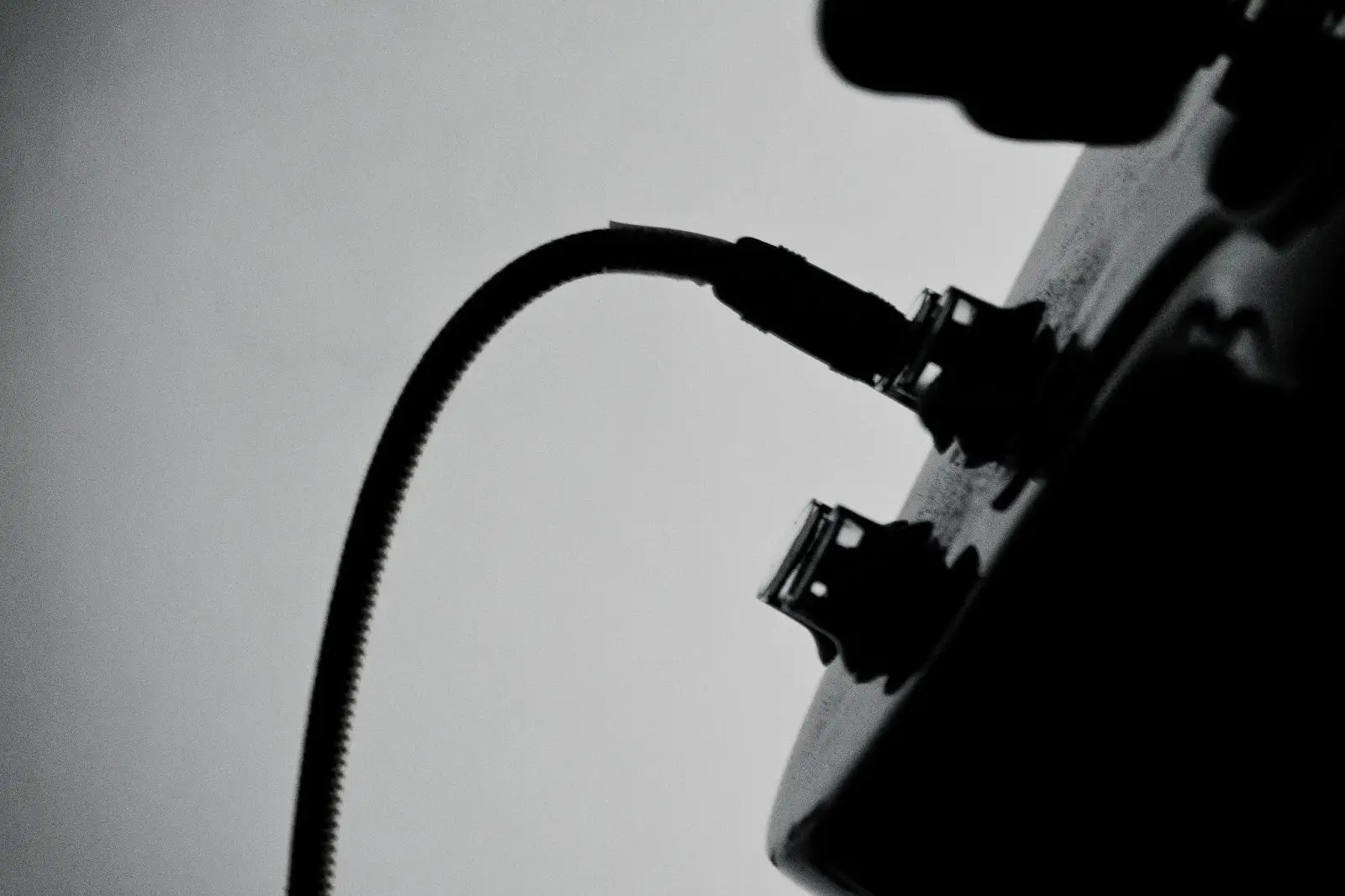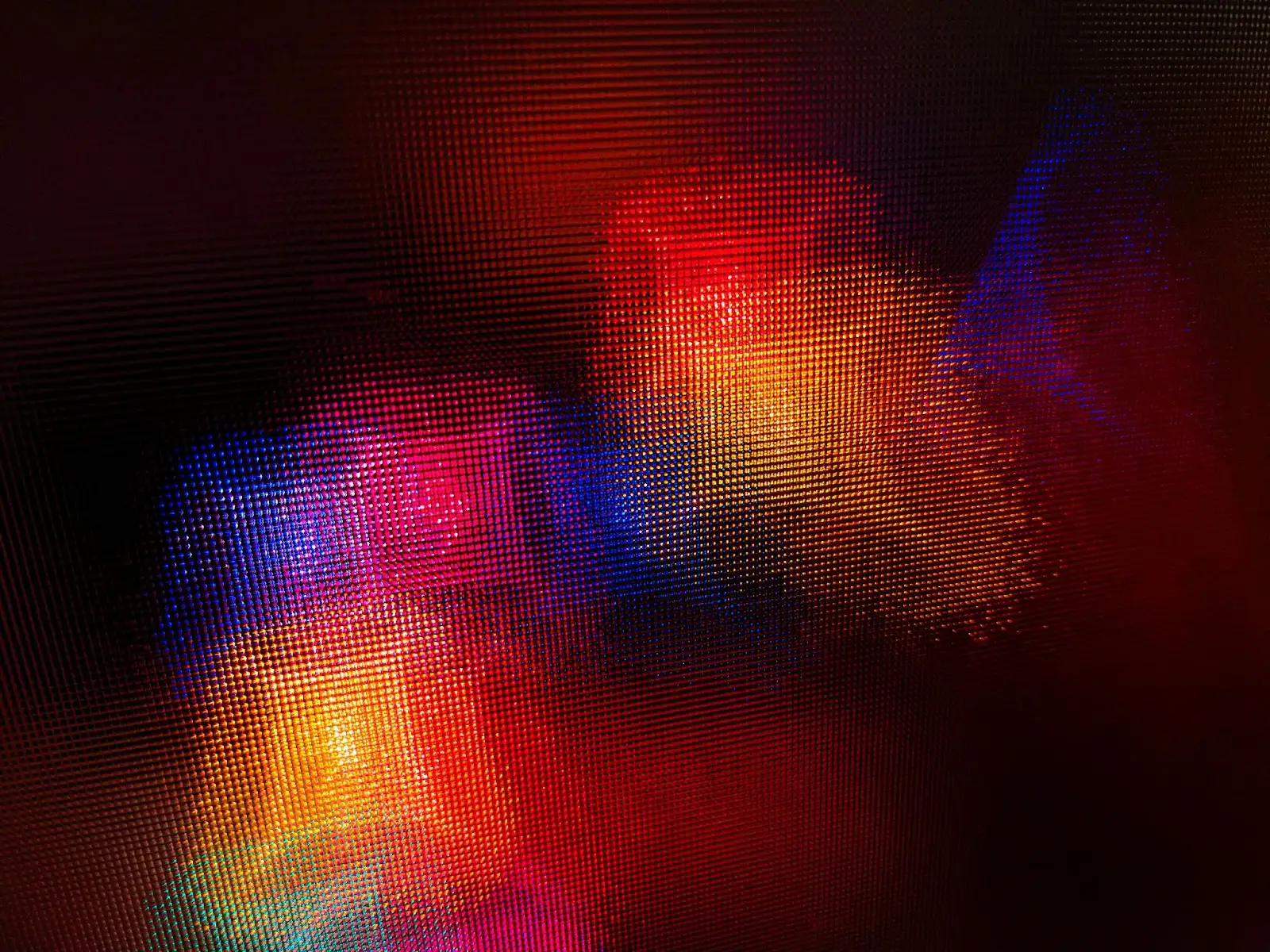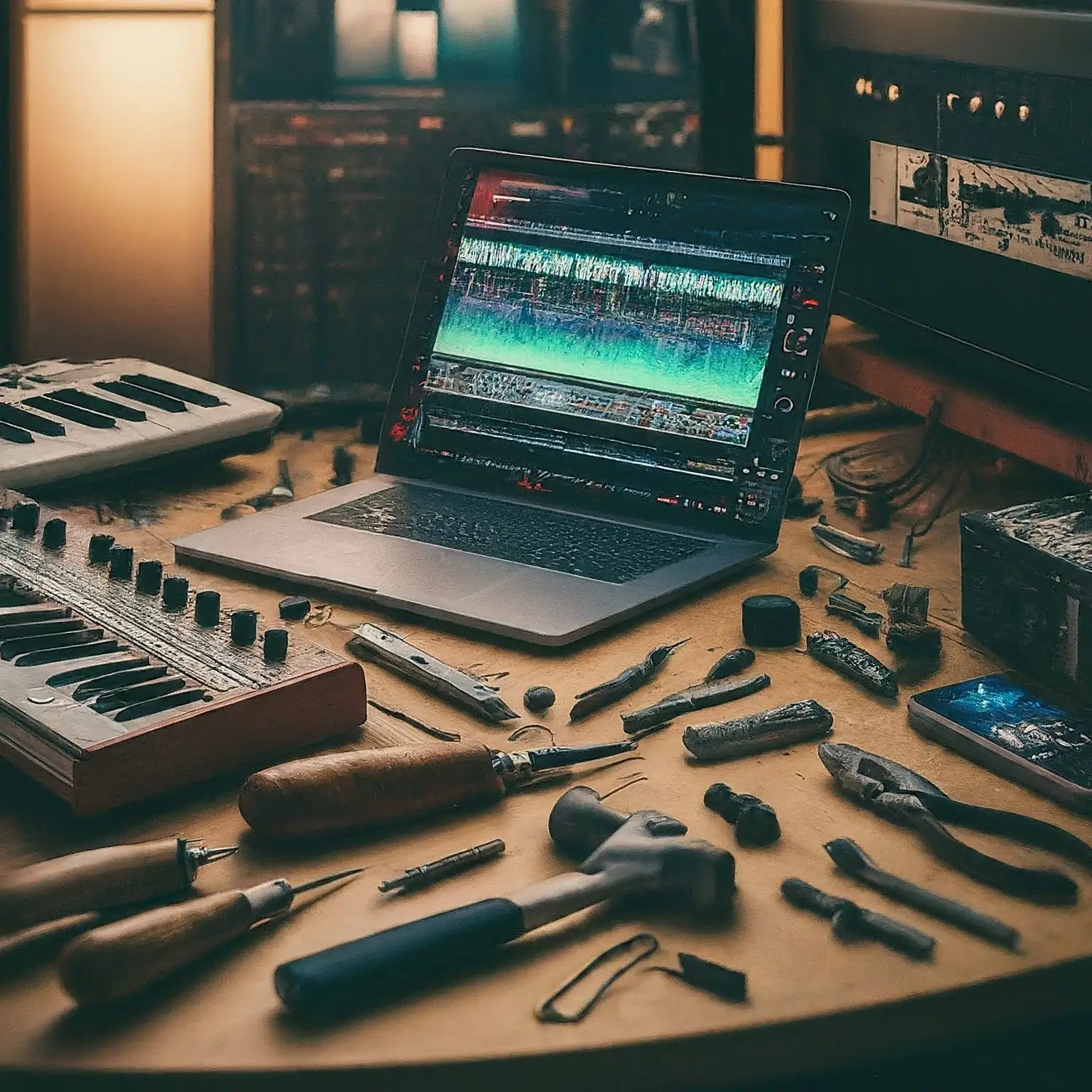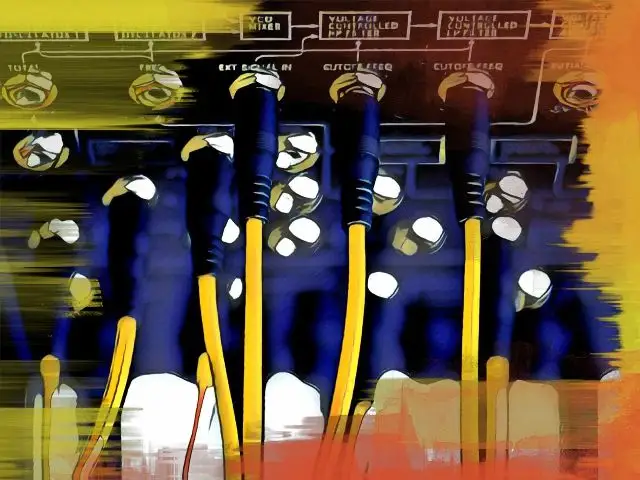Bad audio. We’ve all been there. Nothing destroys the mood in a recording session more than a delinquent signal buzzing and crackling its way around your speakers.
Whether it’s a hiss, a hum, or another unruly sound, interference is something you don’t want in your music. It degrades the listening experience for your audience, and lessens the impact of your song. Plus, it makes you look like a bumbling twerp in the music production department. In short, it needs tackling.
In this article we’re going to be looking at common causes of interference audio-wise, and suggest some ways to avoid it, reduce it, or eliminate it entirely.
Ready? Let’s dive in…
Understanding Audio Interference
In any audio system, be it a live situation or a recording studio, interference is a catch-all term to describe any unwanted sound in your signal chain. There are many ways these noises can present themselves; a low-frequency hum (maybe with resonant frequencies), a mid-range buzz, high-frequency hissing, or plain old abusive crackles.
This electrical noise can come from a slew of sources, including electromagnetic interferences, ground loops, shoddy cables, or radio frequency interference. Each of these sources require different approaches for mitigating and/or eliminating.
Let's start by looking at some of the common causes of interference.
Common Causes of Sound Interference

Cables
While it's fair to say that cables of any kind will contribute to a noise problem, there are some specific instances when they are the cause of the problem.
Loose Connections
Loose cables (i.e. ones that don't fit snugly into the input/output sockets) will introduce noise into the signal.
Damaged Cables
Cables get damaged through wear and tear, and especially if you don't look after them well.
Repeatedly pulling a cable out of a socket by the cable rather than the jack can weaken the solder, eventually leading to signal drop outs. And dropping an amp right on top of a cable obviously won't do it any good.
Power Cables
Running both power cables and audio cables together can cause interference, particularly if they are intersecting, and especially if you're running them long.
Ground Loops
Unwanted noise induced by ground loops is a common woe among musicians. A ground loop occurs when elements from the same signal chain are plugged into different outlets (or plug sockets for my British compatriots), and connected together with audio signal cables.
This grounding issue happens because the cables provide additional grounding to that already hard wired into the AC system, i.e. there's multiple paths to ground. This creates a big ol' (ground) loop that captures unwanted noise via electromagnetic induction.
Electromagnetic Interference

Electromagnetic interference (or EMI for short) can also create noise issues.
EMI is caused by external sources essentially 'leaking' their electromagnetic goo into your audio system. Any electrical gear nearby can cause this issue; monitors, TVs, printers, hairdryers. You name it.
Lights are particularly nefarious for interfering with audio signals, especially if they're controlled by a dimmer switch. I love moody lighting in my studio as much as the next person, but dimmers can make recording life difficult.
Your cables, as helpful as they are in delivering sound from point A to point B act like antenna, picking up on this goo ( technical term ), sucking it into your audio system and creating an audible buzz or hum.
If you're recording instruments that use a pickup, the problem can be exacerbated.
Pickups
Guitars and basses typically use pickups to convert the vibration of the strings into an electrical signal that can be sent to an amp, loud-i-fied, and blasted out into the world.
Electro-acoustic instruments, like an upright bass or electric violin, will often use a piezoelectric pickup. The piezo pickup acts on pressure applied to the pickup by the vibrating string, which is then converted to an electrical signal, and sent to the amp. Piezo pickups tend to be less prone to EMI interference than their more prevalent counterparts.
The more common type of pickup on electric instruments like the guitar or bass, is the magnetic pickup. This kind of pickup is a transducer, made up of a magnet (or magnets) and a coil of copper wire. It creates a magnetic field around the strings which moves up and down when the string is plucked.
Neat science, but no matter how good the shielding is on a magnetic pickup it's not going to be perfect, and you may find yourself the victim of electromagnetic interference.
Radio Frequency Interference
Radio frequency interference is related to EMI, but refers to interference from the lower frequency range used in radio transmission. Not just old-school radio gaga transmitters, but wireless devices like computers, phones and wi-fi.
Equipment Defects
Of course, obnoxious noises are sometimes beyond your control. If the root cause of the problem is dodgy gear you'll need to fix it or replace it. But don't throw out your buzzing microphone before you've made absolutely sure it's due to equipment-related interference.
How to Fix Interference in Audio

So you have a noise problem in an audio signal. It's always better to get to the root of the problem and fix it before committing anything to tape ( old school speak for recording into your DAW ). Fixing it in post is a last-resort measure.
And if you're dealing with interference on stage you need to solve the issue, or be faced with a nettled audience.
The biggest challenge for any engineer is identifying the offending source of the noise. This needs to be done through the process of elimination.
Identifying Sources of Interference
Unfortunately there's no quick way to hone in on where the problem is in your signal chain, but you can speed up the process by approaching things in a systematic and organized way.
Analyze the sound of the interference
- Is it a hum, a buzz, crackling, or something else?
- Is it constant, intermittent, or related to specific actions?
- Does it affect all your equipment, or specific pieces?
Check your cables
- Make sure all connections are secure, and check for damaged cables
Check for a ground loop
- Is all your audio equipment running from one power socket?
Power down nearby electronic equipment
- Start with any lights on a dimmer, then switch gadgets off one by one
Move
- Try moving portable apparatus (your cell phone, tablets etc.) further away from your set up. If you're playing an instrument like a guitar, try moving around to see if that affects the interference.
Remove or replace items in the signal chain
- Do this one by one, starting with inputs, then the cables running to your speakers. Audio interfaces are the least likely source of the problem, so leave them to last.
Rectifying Interference in Audio
Ground Loops
Whenever possible, use one electrical outlet for all your audio equipment. A power strip with a built in surge protector is great investment to make for your studio for this purpose.
If all of your equipment can't reach the same socket (or you have a ton of gear), consider using a ground loop isolator. These are inexpensive and eliminate the problem of hum created by the voltage in your ground.
If you're using a DI box the 'ground/lift' switch will also cut the conductor between the in/out circuits, breaking the loop. Some amps may have a similar feature.
Whatever you do, DO NOT 'pull the ground' i.e. disconnect the equipment from its grounding source. This can lead to the risk of shock. It didn't end well for Les Harvey...
Cables
Aside from loose connections and damage, cables can contribute to noise induced interference. Here's some tips on how to deal with cabling in your studio .
Ferrite Beads
Ferrite beads are little capsules that clip on to power and audio/guitar cables to squish out electrical noise interference. You'll have seen them on laptop power cables - the little bump at the top. They essentially work as a faraday cage, shielding your cable from EMI.
USB cables, despite having some shielding, are also susceptible to current leak. That's why the ones that ship with audio interfaces have a ferrite bead already attached. If you're experiencing interference on your USB cable, and it doesn't already have a bead, grab a pack from Amazon and snuff that noise out!
Balanced Cables vs Unbalanced Cables
Unbalanced cables are more common in consumer-grade audio equipment (e.g. soundbars). They have two conductors - a signal wire and a ground wire.
Balanced cables, on the other hand, have a ground wire and two signal wires. By utilizing fancy science (sending the original audio with an inverted phase along the two signal wires, and flipping it back in phase at the receiving end and combining the two) this configuration cancels out any noise picked up by the cable along the way.
XLR and TRS (Tip-Ring-Sleeve) connections are both balanced connections, so be sure to use them for any audio hook-ups in your studio.
Length
The longer the cable, the more susceptible it is to picking up noise. Use only what you need, and avoid coils of cable sitting around your studio while plugged in.
Don't mix power and audio signal cables
Avoid having power and audio cables running together in long lines.
Power
Despite all the above treatments you may still hear noise in your chain. Consider investing in a UPS (Uninterruptible Power Supply - not the shipping giants).
While they are a pricey investment for a studio - especially considering they're designed to eliminate sound rather than produce it - they're useful for two reasons.
Firstly, they can eliminate noise from your ground line in the same way a hum eliminator can. Secondly, with their knack for switching to battery power on demand - i.e. when your local utilities drop a clanger - they can save your backside. Those few seconds of battery life can ensure you shut down your system safely.
How to Remove Interference & Noise from Audio Files
If you're not responsible for the recording stage of a production you may be handed dicey audio files to work with. (You'd be surprised how many times this happens, no matter how 'professional' the source is).
What to do? It's always better to ask for a re-record, but if this isn't possible all is not lost!
Thanks to nifty software development it's possible to reduce, or eradicate entirely, noise from interference.
Software like the goodies from Waves, and plugins within Steinberg can all help clean up unwanted sound (with the exception of Nickelback) from your audio. If you're dealing with vocals specifically, software for removing vocals can be a game-changer.
Using a spectral view makes it easier to see what frequencies a buzz or hum is sitting at. From there you can use a specialized tool like a de-hum module, or a spectral repair tool to take a sample of the offending buzz and get rid of it.
When repairing audio using a plugin always err on the side of caution. You'll get better results using multiple passes with lower settings than you will trying to eradicate the same noise using one pass with everything turned up full.
And beware of artifacts creeping in. Sometimes the best job you can do is to minimize the noise so it's less audible than before.
If you're worried about the cost of this software, rejoice! There's some useful, free tools to help you clean up noise in your projects.
How to Avoid Noise Issues in the Future

So there you have it - the ultimate guide for how to remove interference in audio, no matter what stage you find it at.
As any reputable doctor would say, prevention is always better than cure. To prevent such a thing happening in the future make sure:
- proper grounding is used
- cables are shielded correctly
- interfering devices are kept at a distance from your workstation
Now go forth and maketh the noise-free music!





